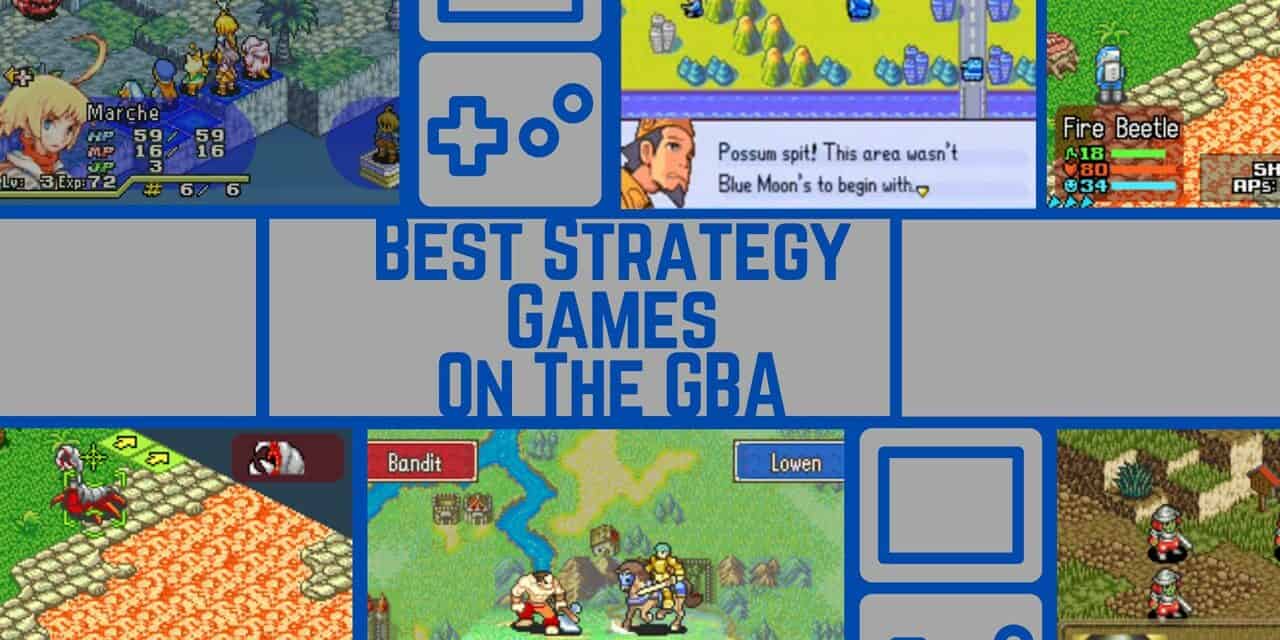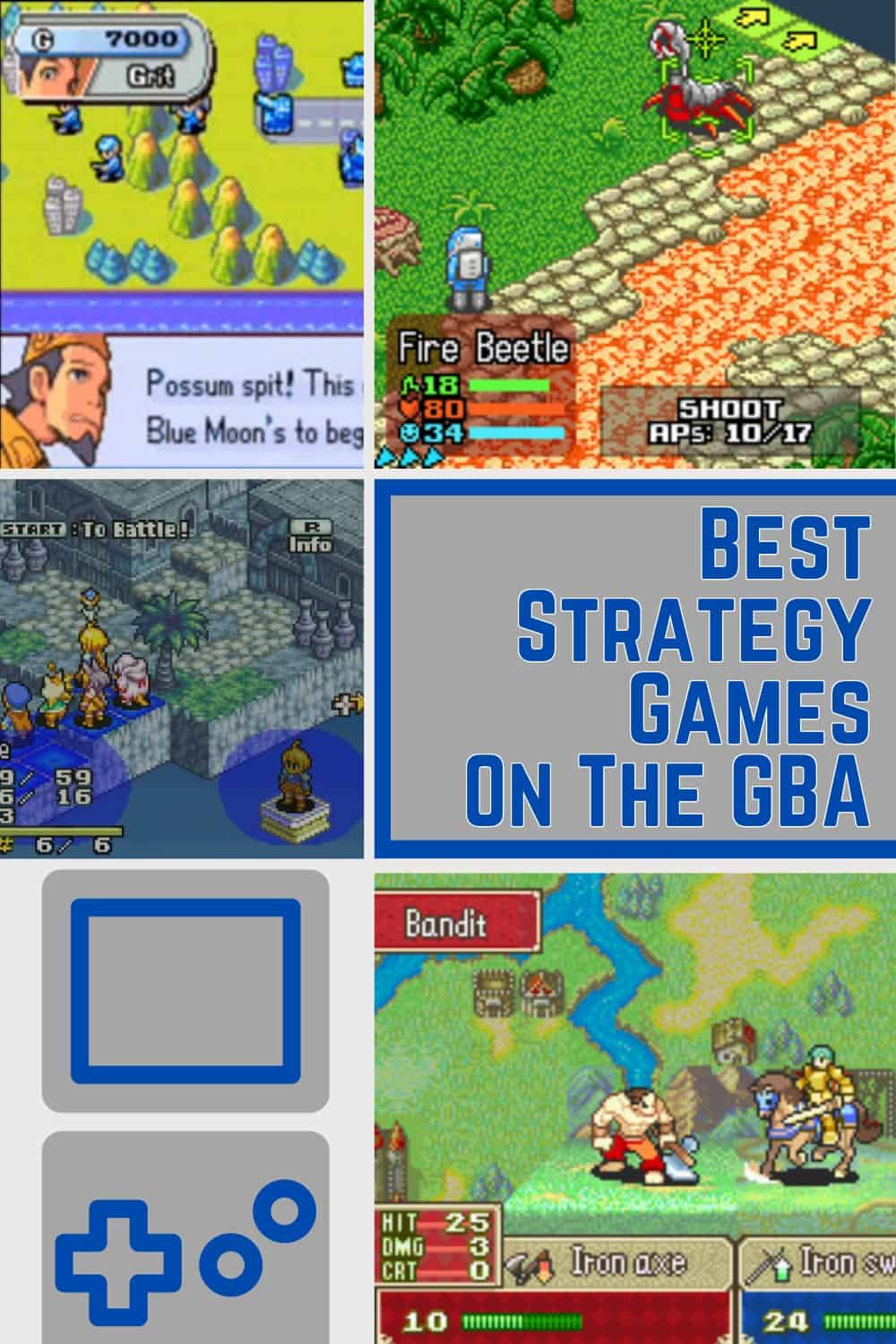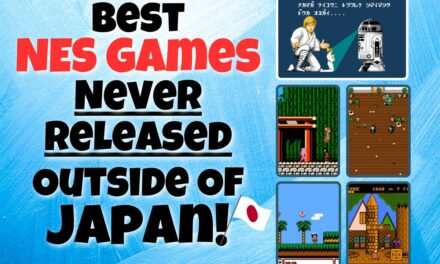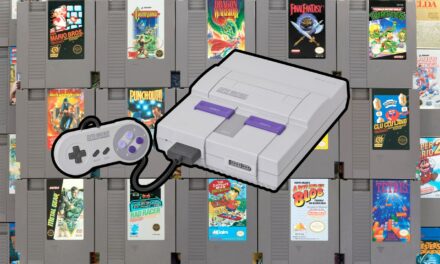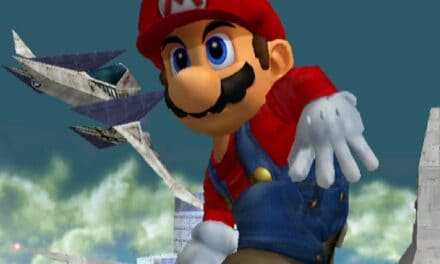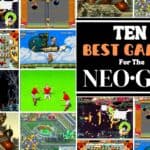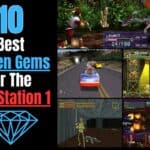I remember a time when the Game Boy Advance was the most dominant console on the market, even more popular than the home consoles. The Nintendo DS may be Nintendo’s best-selling handheld, but the GBA laid the foundation for that generation while giving us some of the best gaming gems.
Although the Game Boy Advance stood out in all genres, strategy games were surprisingly one of its strongest points, and not only because of Pokemon, though if you ask me, the GBA has the best catalog of games in that Pokemon series. Beyond those titles, this handheld console perfectly combined strategy with RPG elements, giving us incredible adventures that have aged quite well. This is the
Best Strategy Games For The Game Boy Advance
Rebelstar Tactical Command (2005)
Publisher: Namco
It may not be as popular as X-COM, but Rebelstar was Namco’s bet on space wars that turned out quite well.
This title takes place in the future, 2117, when the Arelians have invaded Earth. This alien race has subdued humanity with their Psionic abilities and the support of other conquering races.
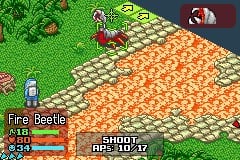
Jorel, the protagonist of this story, escapes to Mexico after losing his parents at the hands of the Arelians, encountering the last hope of humanity: a resistance group willing to do anything to expel the invading forces.
As you can see, the aesthetics of this game are more childish than its story and much more than its gameplay.
The game is developed through chapters, each being a map where you control a squad of units to complete its mission, which can eliminate the enemies in the area, defend it for several turns, rescue a character, or flee the place.
You’d better choose your moves well since you have a limited amount of action points, types of units, and particular objects.
Casual gamers or those with a low frustration tolerance will prefer to steer clear of this game, but I highly recommend it to those looking for a tactical title that will challenge them. This one will be familiar territory if you’ve played any X-COM titles.
Onimusha Tactics (2003)
Publisher: Capcom
Onimusha is another Japanese strategy title that has been lost to time, although the Netflix anime adaptation has increased its popularity.
Onimusha Tactics presents a story that is not closely related to the PlayStation installments of the saga, but they share notable traits.
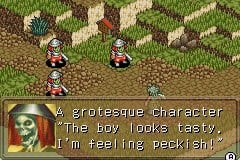
In this story, the warlord Nobunaga has risen from the dead to take revenge on the living in feudal Japan, commanding the army of the Genma, Japanese demons, and other much more terrible creatures. On the other hand, Onimaru, a descendant of the Oni clan, will discover that his destiny is to defeat Nobunaga…
In the absence of cities, the game is structured with more than 20 levels in which you must defeat the enemy army and get genma stones, which in turn serve to improve your equipment.
The gameplay is easy to learn, with turn-based combat on gridded maps with a difficulty level. Beyond that, Onimusha Tactics didn’t innovate the genre much, but sometimes simplicity is genius.
Yu-Gi-Oh!: The Sacred Cards (2003)
Publisher: Konami
We start the list with a saga that is constantly compared to Pokemon, but in reality, they are very different games.
The GBA was home to some of the best Yu-Gi-Oh! titles but this one is a reinterpretation of the Battle City arc. It’s about a tournament organized by the Kaiba Corporation to determine the best Duelist in Domino City.
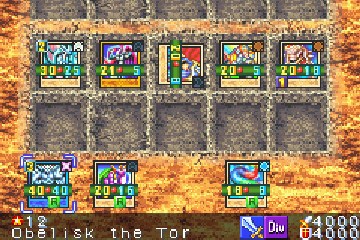
You must beat several Duelists with your Locator Cards to progress through the story and unlock various locations where there will be new Duelists. The objective is to obtain the 6 Locator Cards to enter the tournament, but that is only the surface of this arc directly related to the origin of the card game.
The game system is identical to the traditional Yu-Gi-Oh, where you start with weak cards with hardly any magic or traps, but later they become more powerful. Eventually, you get to use the deck of the Egyptian God, a deity in the manga universe.
In addition to the exciting battles, The Sacred Cards offers the experience of traveling around the city and meeting various duelists along the way. Doing so will gain knowledge and new cards for the main tournament.
Overall, it is a game you will not let go of until you get more than 1,000 cards available.
Golden Sun (2001)
Publisher: Nintendo
It was time for a JRPG, and what better than the classic Golden Sun.
Created by Gameloft Software, Golden Sun revolves around Hans (whose name is customizable), a boy who witnessed a terrible catastrophe in his peaceful village.
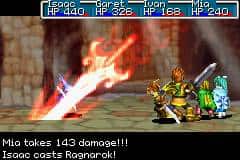
Three years after those events, Hans embarks on an incredible adventure with his friends to protect his town and the whole world from the dark power of alchemy…
Beyond an intriguing story, Golden Sun offers traditional role-playing adventures with a turn-based battle system and a vast world map exploration. But far from being limited to conventional magics and attacks, the game introduced Djinns to the equation, powerful beings you can summon in the middle of a battle to do massive damage.
Just like Pokemon, you must summon them at the right time and know the weaknesses of each enemy to get the most out of these magical allies.
In addition, Golden Sun had a spectacular soundtrack and graphics in combat seen in a handheld for those years, as the effects and character animations were wild.
I’m not adding its 2003 sequel, The Lost Age, because it feels like a second part of a complete game, almost like Golden Sun didn’t come on a single cartridge.
Something striking about The Lost Age is that it allows us to import the save data from the first game, which was very rare to see in an RPG series of that time.
Breath of Fire Advance (2001)
Publisher: Capcom
Perhaps the Breath Of Fire saga has been lost a bit in time, but back then, these games were pioneers of the strategy genre and was the first RPG by Capcom in its history.
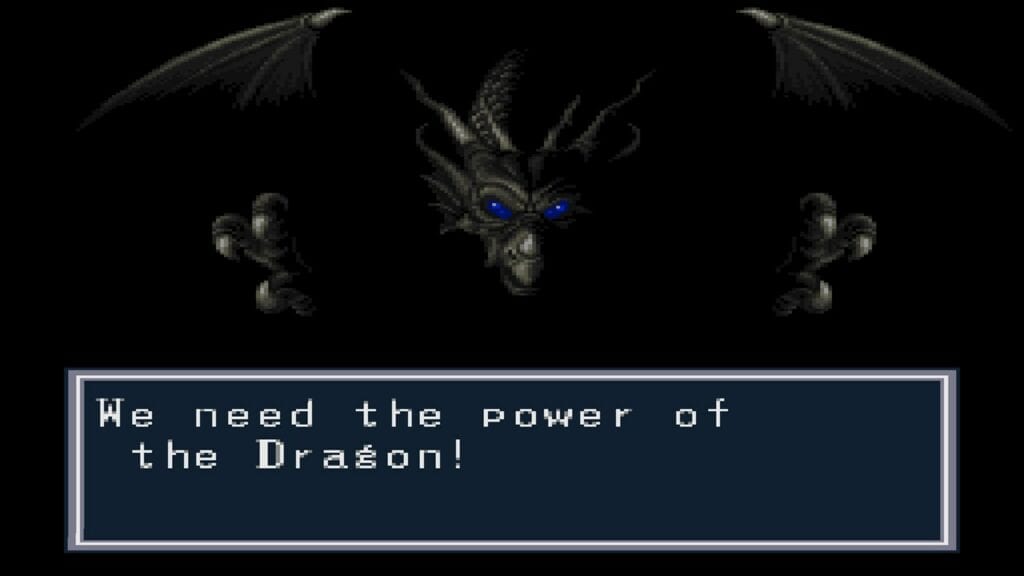
As an adaptation of the original 1993 game for the SNES, Breath of Fire Advance places us in a world with a variety of different anthropomorphic races that can transform into incredible creatures and come together in clans.
The classic protagonists of this saga are the members of the Dragon Clan, whose empire was the most powerful in the world until greed separated them, giving way to the Light Dragons and Dark Dragons. After the first catastrophic battle, it seemed that the Dragon Clan became one again, but the Dark Ones never sleep…
With this title, we find the JRPG experience of a lifetime, with a turn-based combat system, random battles, leveling up, and other features that for the 90’s were novel,
This version has some improvements over the original version, such as the ability to travel around the map with a single button and other graphical enhancements.
There are not many other new features, but it is part of its charm to keep the essence of the original. Undoubtedly, a game recommended for those who want to get started in this series.
Mario & Luigi: Superstar Saga (2003)
Publisher: Nintendo
What a nightmare this game was in my childhood, but in a good way. If Mario & Luigi were already fun in their platform adventures.
Like all Mario Bros. games, it starts with Princess Peach being kidnapped, although this time only her voice is stolen, courtesy of the evil sorceress Cackletta.
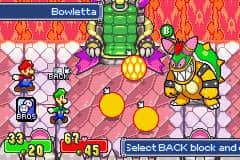
That’s where our favorite plumbers come in to save the day.
If you haven’t played it, its narrative will seem repetitive, though as you play, you’ll come across many plot twists that will keep you glued to the screen for 20-30 hours. Seriously, that’s how long the game lasts.
As childish as it sounds, its combat system is easy to learn but challenging to master.
Of course, the platforming mechanics were kept, starting from the primary and straightforward jumping to end up in combo moves requiring coordination and dexterity to combine the brothers’ power.
The fights combine traditional RPGs’ classic turn-based and menu-driven combat, along with just the right amount of coordination and skill required in an action RPG. While many enemies can be defeated with a simple jump, that’s far from all you need to do, and that’s part of the fun.
Superstar Saga is perfect for introducing younger gamers to RPGs, giving them a real challenge that doesn’t become frustrating… I think.
Final Fantasy Tactics Advance (2003)
Publisher: Nintendo
Final Fantasy wasn’t satisfied with dominating the adventure RPG market and decided to dive into tactical games and guess what, they created another successful sub-series.
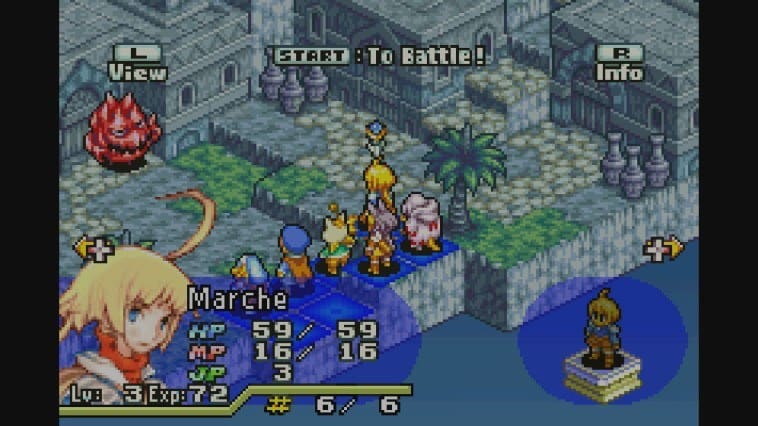
Based on the 1997 PS1 game of the same name but without being a direct sequel, Final Fantasy Tactics Advance starts with an ordinary boy who, while reading a magical book with his friends, ends up in the legendary world of Ivalice, precisely like one of their dreams, though not everything is as it seems.
In the game, you’ll encounter a slew of playable characters of all kinds that will join your group, among which you’ll have to choose your fighters, with a large variety of items that will help you improve them and even unlock special moves.
FFT may not have been the creator of Tactics games, but it helped evolve the genre even in its GBA release, which is still remembered today as one of the best of this sub-series.
Its isometric perspective, epic turn-based combat, maps with strategic positions, scenario design, and other elements make it a challenging but highly entertaining experience.
Advance Wars (2001)
Publisher: Nintendo.
When someone mentions strategy and Game Boy in the same sentence, I first think of Advance Wars, one of the industry’s most beloved niche sagas.
In this war title, you take the role of a military commander who participates in turn-based battles, which, in this case, correspond to days.
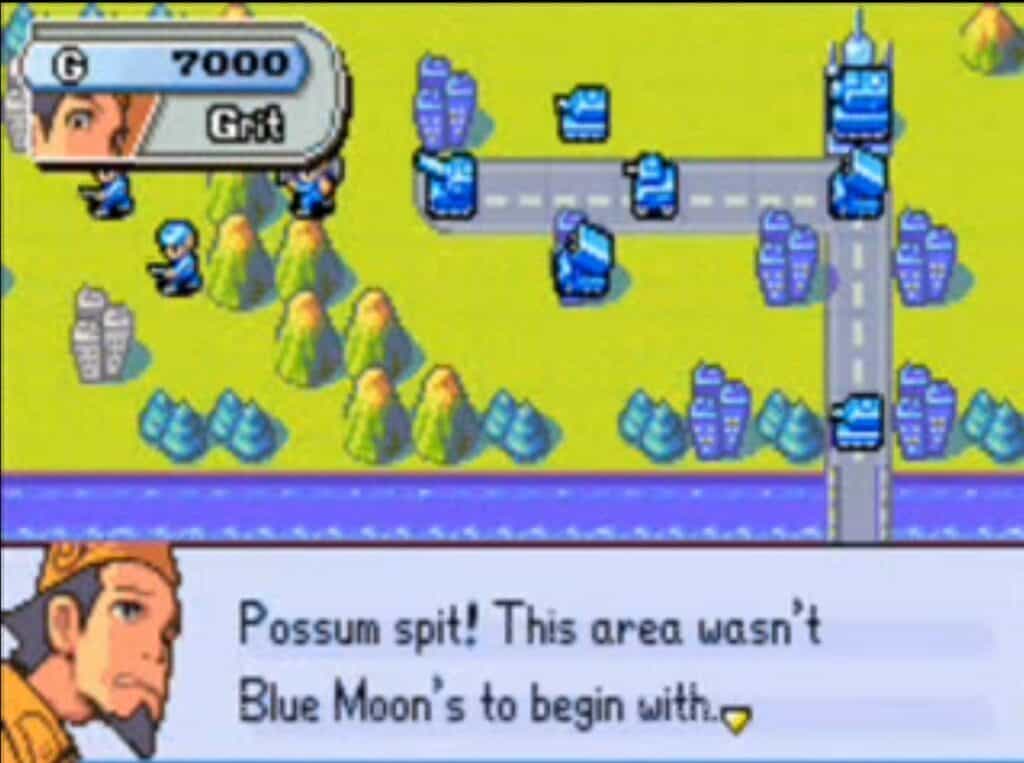
Your units can either move and then attack or only one of the two. There are special actions such as load and unload (for cargo vehicles), capture (infantry), supply and dive/emerge (for submarines), but the main ones are the aforementioned: move and attack, but it’s not that simple either. Otherwise, it wouldn’t be a strategy game.
You must think about the best action, taking into account a multitude of factors: If it’s convenient to attack that unit for a victory if you enter the field of a long-range unit, the defensive capacity of the zone you are moving towards if you leave a gap in your defensive lines and a long etcetera. And don’t even get me started on the types of units and how to obtain them during each combat.
Beyond its complex gameplay system is its greatest strength. Advance Wars also boasts a Campaign Mode with endearing characters, alliances, betrayals, rivalries, and… Yes, many battles.
Here, I must stop because this game requires a whole bible to explain it but don’t let that scare you. It’s a pleasant experience with a well-measured learning curve that will make you a true commander.
Fire Emblem (2003)
Publisher: Nintendo.
At this point, it is more than evident that the GBA had incredible Tactical-RPGs gems, but the Fire Emblem saga is undoubtedly the king of this genre. This 2003 release was the first to be launched internationally and started the massive Fire Emblem phenomenon.
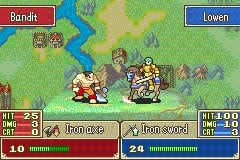
The story revolves around a world where humans and dragons lived peacefully until both races went to war during “The Battles.” The humans ended up with the victory, and the dragons started to become extinct, but that would not be the end of the war.
The first narrative arc of this game is about Lyn, the sole survivor of a tribe. Throughout her story, more main characters and gameplay mechanics are introduced. In a nutshell, it is the tutorial.
Then comes the natural juice of the game, the story of Lord Eliwood, with more than thirty chapters and endless battles in which you must intelligently use the environment, troop types, special moves, the “weapon triangle,” and other tactical aspects.
Although the most challenging mechanic of Fire Emblem is that your troops are unique characters, they can be disabled forever if they lose in battle. In addition, there are particular items with which you can upgrade them to new roles, but they are very limited.
Every battle counts, and that’s why Fire Emblem franchise has earned its place as one of the best RPGs and one of the best GBA games ever made.
The Pokemon Saga (2002 – 2004)
Publisher: Nintendo.
If we are talking about the king of GBA strategy games, it is impossible not to give the award to the third generation of the Pokemon Saga.
From the Pokemon Ruby Version & Sapphire Version to the Pokemon Emerald Version, passing through the classic Fire Red & Leaf Green, this series shined like never before on the GBA, improving everything they had done on the previous consoles.
The move from Game Boy Color to GBA allowed Game Freak to add a lot of improvements, not only in the technical section but also in gameplay mechanics.
Each Pokémon was given a unique touch thanks to the addition of nature and their abilities. For example, you can capture several Pikachus, and none would be identical according to their nature.
Each of them is powered by one stat or another, and their abilities could also be different.
Another added aspect was the double battles in which there are four Pokemon per battle, completely changing the strategy necessary to win. You must ensure that the Pokemon chosen are the best possible match.
Then there are the new regions and creatures that kept me and my friends glued to the screens for hours to see who had the best Pokedex.
I know that Pokemon is the safe option, but in terms of strategy, it sets the basis of the saga today. Millions of people still play the GBA titles, either in their vanilla version or the famous “Locke,” which expands the possibilities even more.
Wrapping Up The List Of The Best Strategy Games For The GBA
Undoubtedly, the Game Boy Advance was one of the consoles where the strategy genre and Tactical RPGs shined like never before. From the expanding already established franchises to titles that laid the foundations of what the genre is today. The GBA had it going on.
It is worth noting that even if you don’t have a GameBoy to play these fantastic games, many of the best ones worth playing are playable through the Nintendo Switch Online game library. So pick a few up and get started today.
